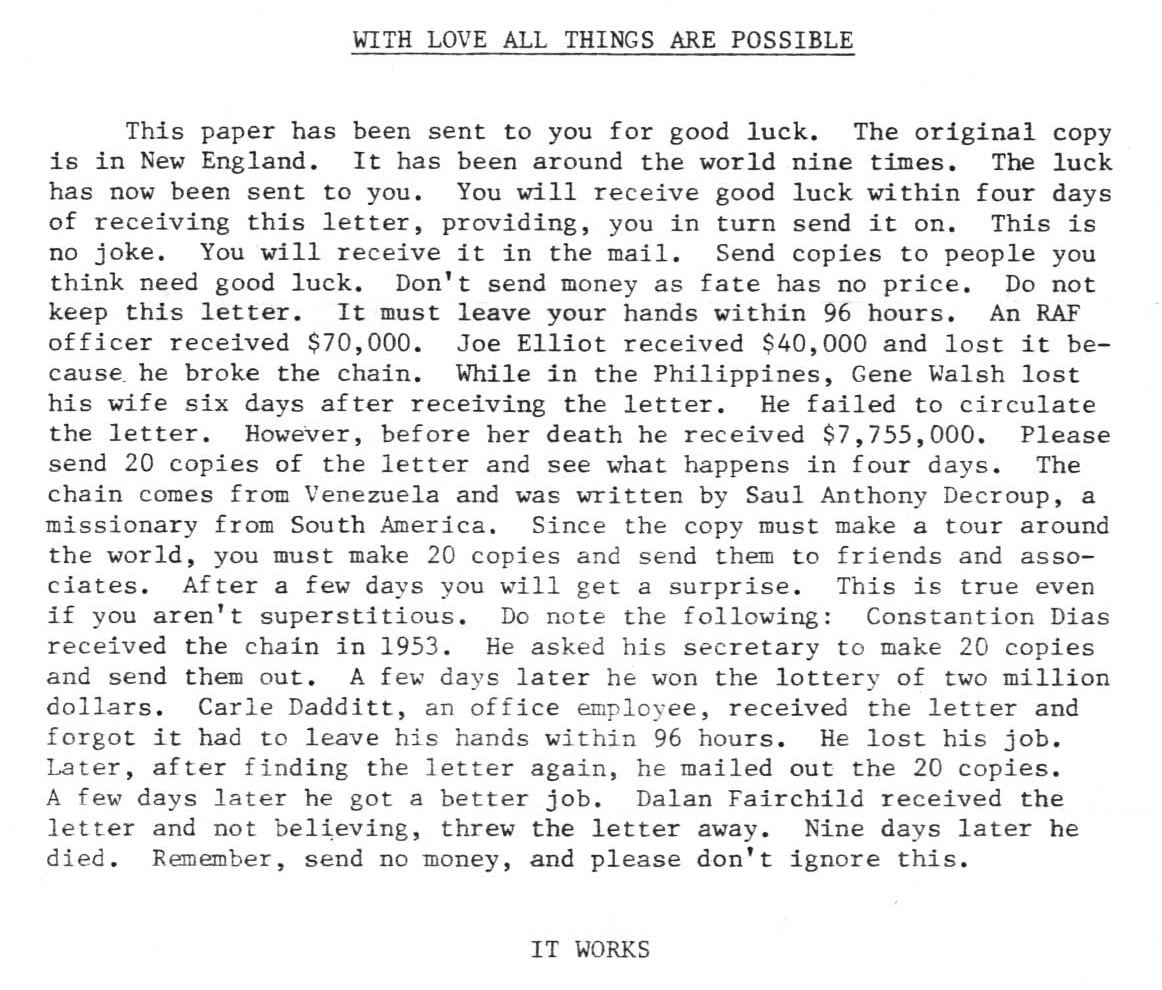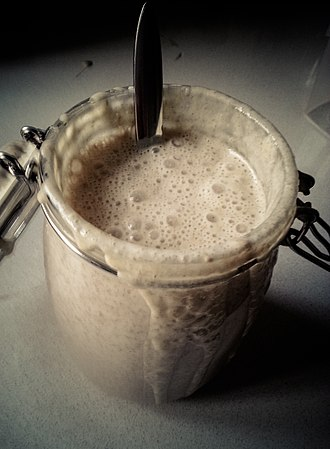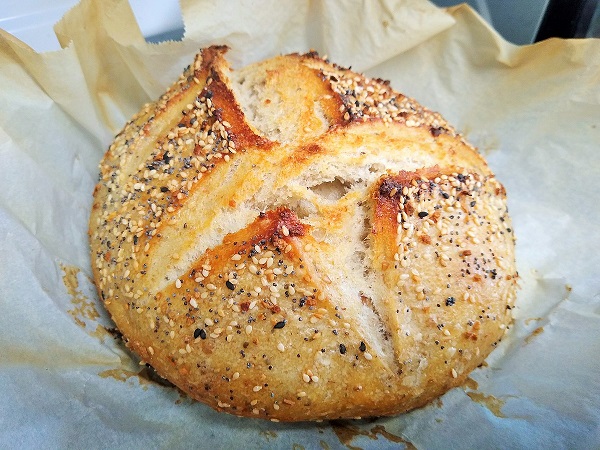Pre-internet Virality Examples
Contents
11.2. Pre-internet Virality Examples#
Since we can look at any part of culture through an evolutionary perspective (memes), we can see how things “went viral” before the invention of the internet.
11.2.1. Books#
The book Writing on the Wall: Social Media - The First 2,000 Years describes how, before the printing press, when someone wanted a book, they had to find someone who had a copy and have a scribe make a copy. So books that were popular spread through people having scribes copy each others books. And with all this copying, there might be different versions of the book spreading around, because of scribal copying errors, added notes, or even the original author making an updated copy. So we can look at the evolution of these books: which got copied, and how they changed over time.
11.2.2. Chain letters#
When physical mail was dominant in the 1900s, one type of mail that spread around the US was a chain letter. Chain letter were letters that instructed the recipient to make their own copies of the letter and send them to people they knew. Some letters gave the reason for people to make copies might be as part of a pyramid scheme where you were supposed to send money to the people you got the letter from, but then the people you send the letter to would give you money. Other letters gave the reason for people to make copies that if they made copies, good things would happen to them, and if not bad things would, like this:
You will receive good luck within four days of receiving this letter, providing, you in turn send it on. […] An RAF officer received $70,000 […] Gene Walsh lost his wife six days after receiving the letter. He failed to circulate the letter.

Fig. 11.2 An example chain letter from https://cs.uwaterloo.ca/~mli/chain.html.#
The spread of these letters meant that people were putting in effort to spread them (presumably believing making copies would make them rich or help them avoid bad luck). To make copies, people had to manually write or type up their own copy of the letters (or later with photocopiers, find a machine and pay to make copies). Then they had to pay for envelopes and stamps to send it in the mail. As these letters spread we could consider what factors made some chain letters (and modified versions) spread more than others, and how the letters got modified as they spread.
11.2.3. Sourdough starters#
Sourdough bread is made by baking something called a “starter,” which is a mix of flour, water, and a colony of microorganisms (like yeast).

Fig. 11.3 Sourdough starter. Photo by Janus Sandsgaard#

Fig. 11.4 Sourdough bread. Photo source#
The microorganisms in the starter will continue multiplying if you let them, and you can add flour and water to make it larger, then split it into multiple starters. You can repeat this process again and again, occasionally using some starters to bake bread, but you can share the starters with others.
In this way, as people split and share their starters, sourdough starters are spread, multiply and evolve (including the microorganisms evolving biologically). One sourdough starter even dates back to at least 1847.
